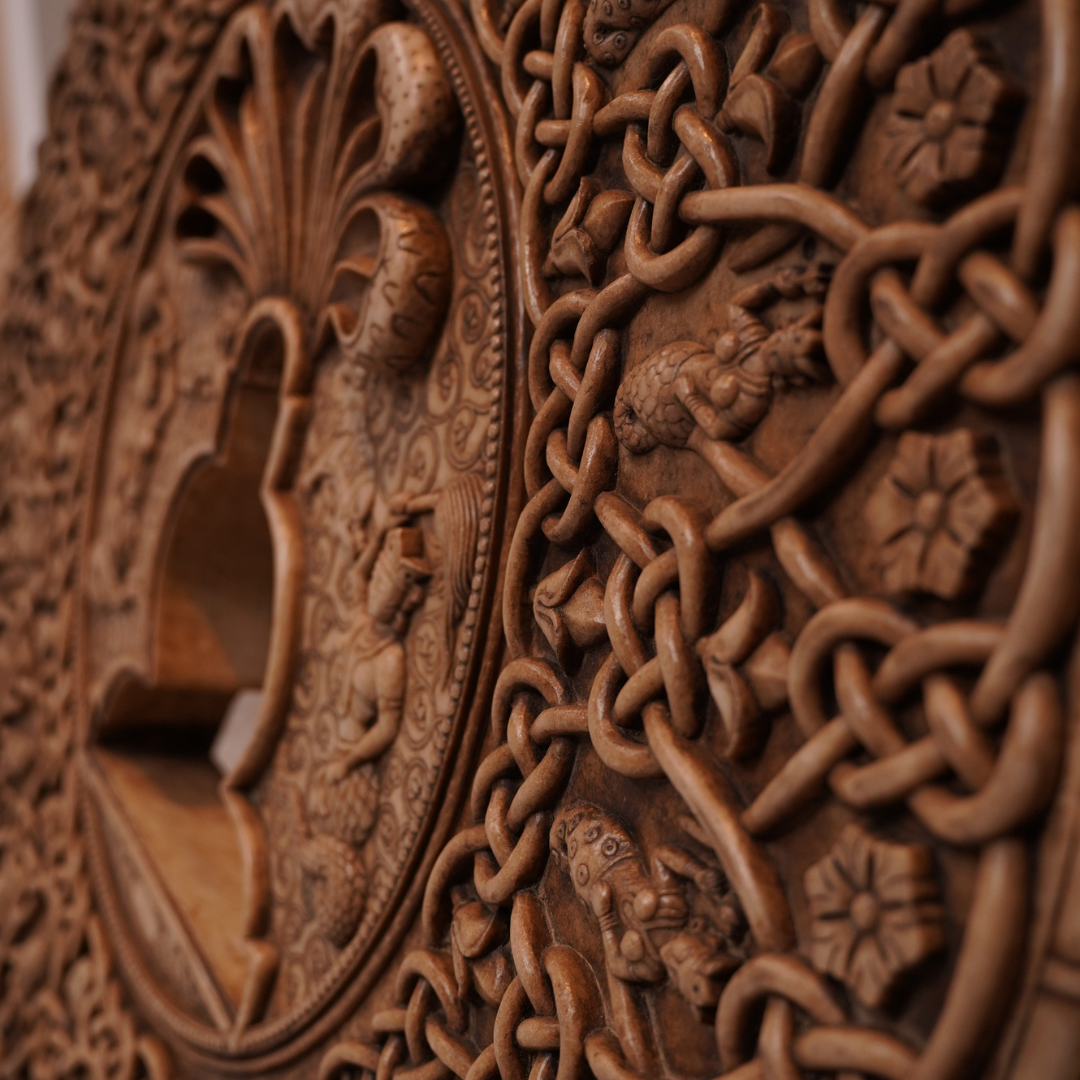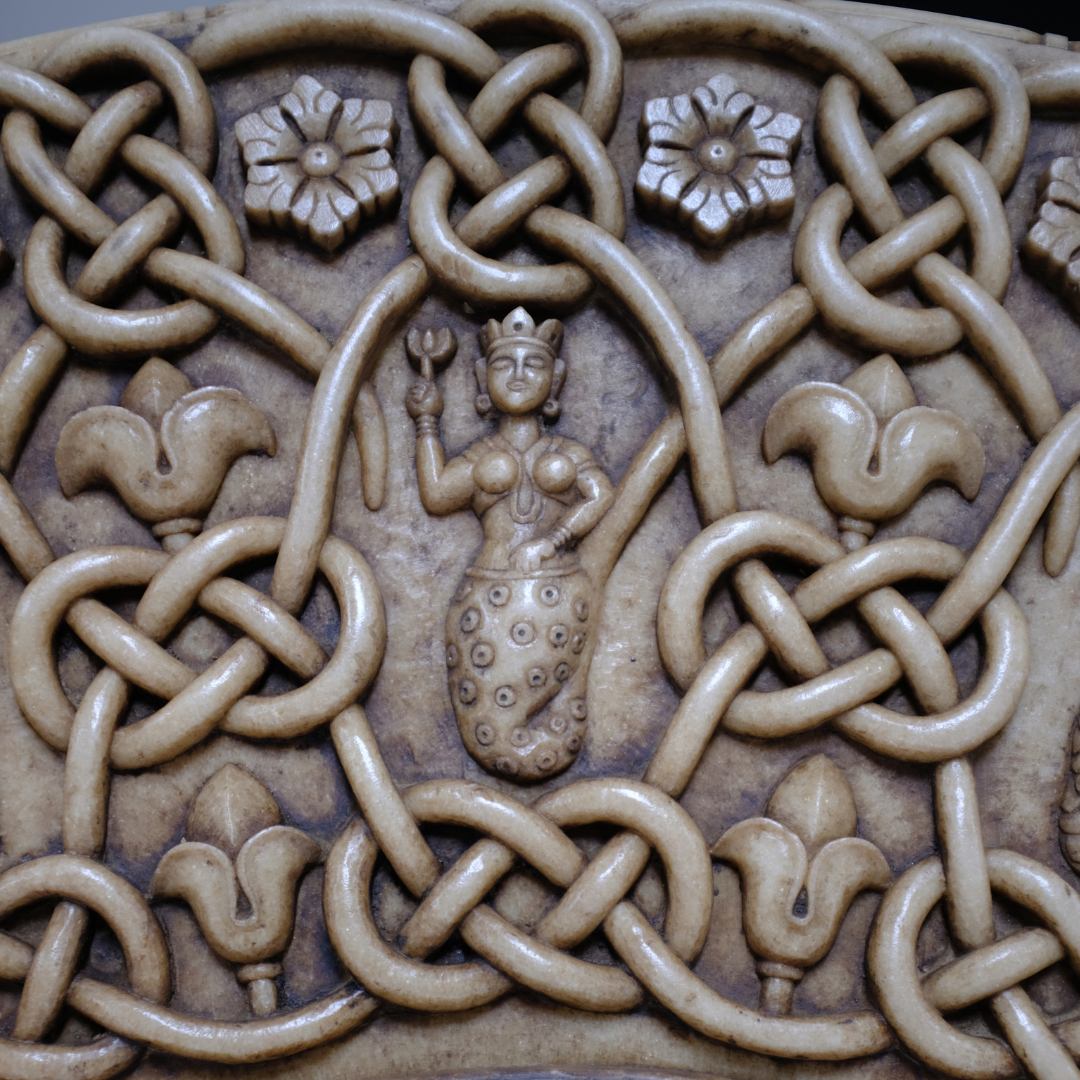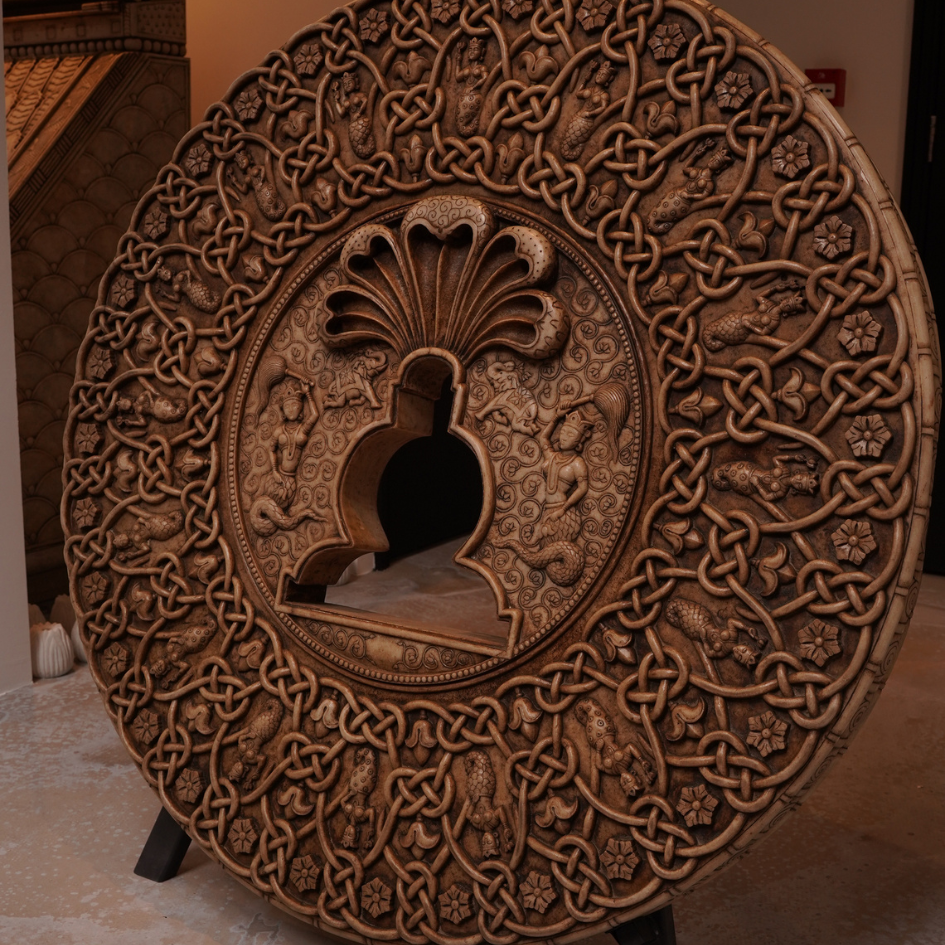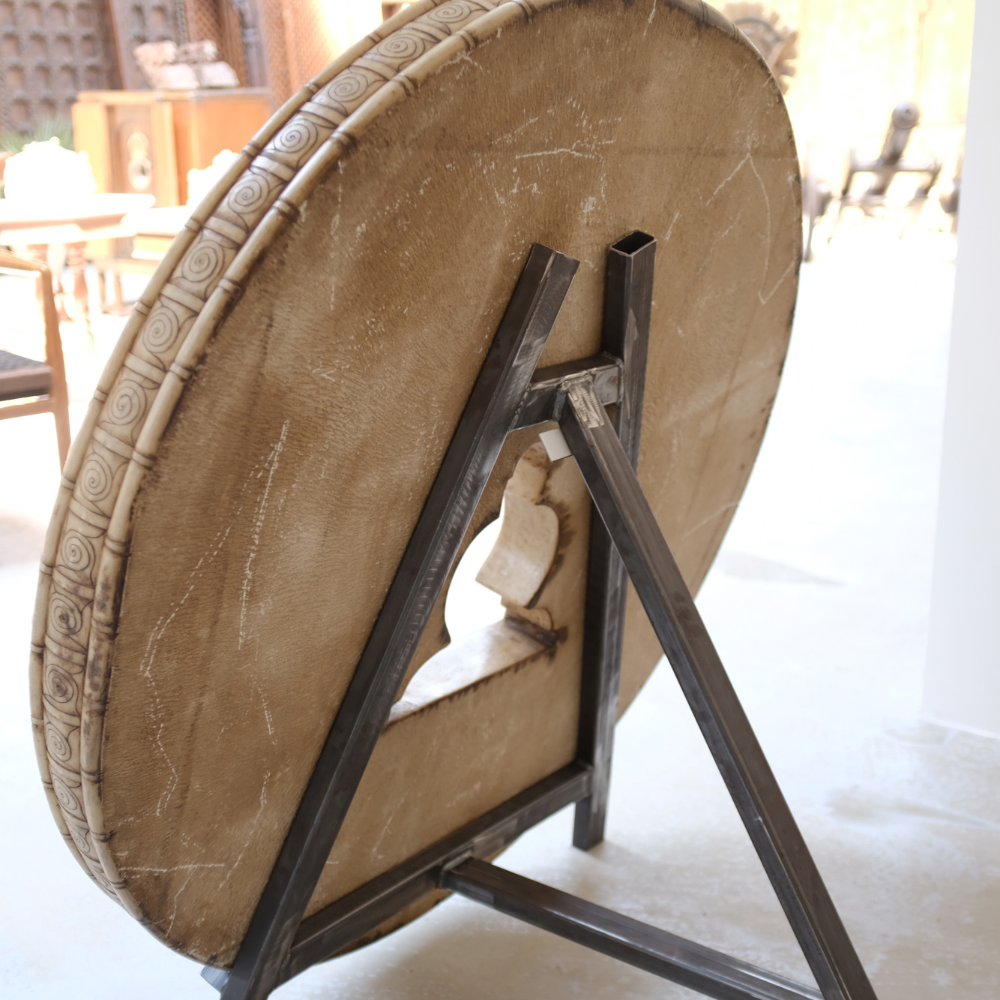
Price
Materials
Period
Place of origin
SKU
Dimensions
Available Stock: 1
About the product
Antique Hand-Carved Jain Marble Mandala Panel Featuring Parshvanatha | Rajasthan, India | Circa Late 18th Century
Rare Jain Temple Sculpture | Sacred Mandala Iconography | Museum-Quality Indian Marble Relief
This late 18th-century Jain marble mandala panel from Rajasthan is a rare architectural fragment of spiritual and sculptural importance. Hand-carved in circular low relief, it represents Parshvanatha, the 23rd Tirthankara of Jainism, framed by sacred motifs of serpents, attendants, elephants, and floral scrollwork. Executed in fine white marble with time-softened patina, the panel embodies both the philosophy and artistry of Jain devotional practice.
✦ Sacred Geometry and Symbolism
At its centre lies a sacred void, a deliberate absence representing Parshvanatha in metaphysical form. In Jain philosophy, the Tirthankara is invoked not through physical likeness, but through consciousness and structure. Above this negative silhouette rises the five-headed serpent hood of Dharnendra, protector of Parshvanatha during meditation. The composition follows the classic Jain cosmic order: heavens at the top, mortal realm in the middle, and earth at the base.
✦ Iconographic Detail
• Sacred Void: Central silhouette symbolising pure consciousness
• Naga Hood: Five-headed serpent canopy referencing divine protection
• Elephants: Emblems of wisdom and spiritual strength
• Half-Serpent Attendants: Guardians offering chowries (fly-whisks)
• Mandala Border: Intricate knotwork, lotus blossoms, and floral tracery forming a meditative frame
Every detail, from the braided ring to the floral dotwork, reflects disciplined craftsmanship and cosmic geometry. The structure echoes celebrated Jain reliefs at Ranakpur Temple, where sacred symmetry and abstraction guide spiritual contemplation.
✦ Key Features
Date: Late 18th century
Region: Rajasthan, India
Material: Hand-carved marble with natural aged patina
Religious Context: Jainism, Tirthankara Parshvanatha
Technique: Circular low-relief carving with floral and geometric motifs
Dimensions: W: 115 cm x H: 115 cm x D: 10 cm
Condition: Excellent antique condition with age-consistent wear
✦ Display & Cultural Significance
Originally adorning the sanctum walls of a Jain temple, this panel functioned as both spiritual map and sacred sculpture. Today, it is a museum-grade artefact suitable for:
Museum & Gallery Collections: South Asian religious art, Indian temple sculpture
Private Collectors: Focused on Jainism, spiritual symbolism, or antique marble works
Interior Design: Heritage-inspired spaces, meditation halls, yoga studios, and sacred décor projects
✦ Why This Piece Matters
✔ A genuine late 18th-century Jain marble relief from Rajasthan
✔ Unique representation of Parshvanatha through sacred absence
✔ Rare collector’s item, comparable to temple panels at Ranakpur
✔ Blends decorative beauty with profound spiritual symbolism
✔ One-of-a-kind museum-quality artefact
✦ Delivery & Collection
Due to its weight and value, this panel qualifies for specialist white-glove delivery across the UK. International shipping and local collection can also be arranged. Please contact Regen Bespoke for tailored logistics.
Exclusively available at Regen Bespoke
Where heritage, craftsmanship, and spiritual symbolism converge.






